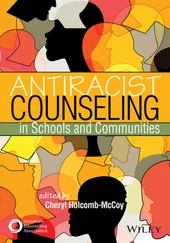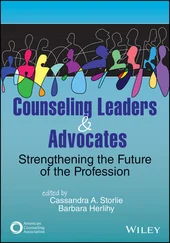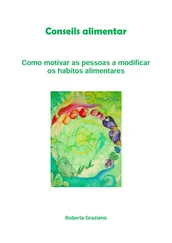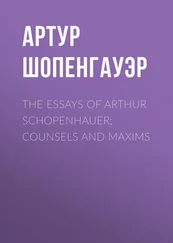Counseling and Psychotherapy
Здесь есть возможность читать онлайн «Counseling and Psychotherapy» — ознакомительный отрывок электронной книги совершенно бесплатно, а после прочтения отрывка купить полную версию. В некоторых случаях можно слушать аудио, скачать через торрент в формате fb2 и присутствует краткое содержание. Жанр: unrecognised, на английском языке. Описание произведения, (предисловие) а так же отзывы посетителей доступны на портале библиотеки ЛибКат.
- Название:Counseling and Psychotherapy
- Автор:
- Жанр:
- Год:неизвестен
- ISBN:нет данных
- Рейтинг книги:4 / 5. Голосов: 1
-
Избранное:Добавить в избранное
- Отзывы:
-
Ваша оценка:
- 80
- 1
- 2
- 3
- 4
- 5
Counseling and Psychotherapy: краткое содержание, описание и аннотация
Предлагаем к чтению аннотацию, описание, краткое содержание или предисловие (зависит от того, что написал сам автор книги «Counseling and Psychotherapy»). Если вы не нашли необходимую информацию о книге — напишите в комментариях, мы постараемся отыскать её.
Counseling and Psychotherapy — читать онлайн ознакомительный отрывок
Ниже представлен текст книги, разбитый по страницам. Система сохранения места последней прочитанной страницы, позволяет с удобством читать онлайн бесплатно книгу «Counseling and Psychotherapy», без необходимости каждый раз заново искать на чём Вы остановились. Поставьте закладку, и сможете в любой момент перейти на страницу, на которой закончили чтение.
Интервал:
Закладка:
A counselor who is hearing a client’s accounting of a loss or difficult situation responds with genuine feeling rather than with a pat phrase or canned therapeutic response (Jordan & Duffey, 2020). Rather than the blank slate response espoused by some theories, RCT calls on counselors to be vulnerable and genuinely connect with their clients. This RCT concept has been popularized by writers such as Brene Brown (2015) and others through the language of vulnerability, which RCT sees as a by-product of strength (Miller & Stiver, 1995).
Sidebar 2.4 Case Study: The Importance of Considering Power Dynamics
Imagine you are working as a substance abuse counselor in an outpatient setting. You receive a referral for Jamie, an African American nonbinary individual referred to you by the criminal justice system. The court ordered Jamie to attend counseling as a condition of probation. Jamie has an arrest history related to substance use and has recently received a felony possession charge. Jamie’s primary goals for counseling are to maintain abstinence from drugs and to get a job.
What are some of the social and institutional power situations that Jamie faced and will continue to face as (a) an ethnic minority, (b) a nonbinary individual, and (c) a convicted felon? How do you see the role of power playing in your relationship with Jamie? How will you use your power to support a productive outcome to Jamie’s counseling?
Relational Images
We discussed relational images and how they form developmentally in the Human Growth and Development in Connection section of this chapter and will briefly address it here. RCT identifies relational images as powerful imprints that influence people’s expectations of how others will behave or respond to them. When people are treated with respect and care, they will likely see others as respectful and caring. If, however, they have suffered abuse or relational injury, they may grow to expect that others will hurt them or cause them pain. As a result, people with hurtful relational images may withdraw from others, expect and prepare for a fight with others, or self-protect in anticipation of further injury. Part of the counseling process involves the client and counselor recognizing these relational images and giving context to their fears, expectations, and behaviors.
Controlling Images
According to RCT, controlling images are a set of categories and expectations developed by the dominant group to distort and disempower a nondominant group (Hill Collins, 2000; Jordan, 2018). Hill Collins (2000) explored the notion of controlling images, a central tenet of RCT, in her book Black Feminist Thought: Knowledge, Consciousness, and the Politics of Empowerment . The chapter “Mammies, Matriarchs, and Other Controlling Images” brings context to RCT’s focus on power structures within social and cultural contexts. According to Hill Collins, racially and ethnically marginalized groups are categorized and stereotyped to validate the oppression and mistreatment of disenfranchised groups.
Controlling images result in social injustices, which are normalized in the larger societal sphere. People are then blamed for these injustices and for their own oppression. The concept of controlling images recognizes that every person carries multiple identities. It is therefore important that people understand the spaces and places they inhabit and recognize where the multiplicity of identities is underscored or silenced. RCT concurs that these controlling images remain in place to systematically keep people in categories and, as a result, bring harm to members of disenfranchised groups. Using an RCT framework, counselors take into account the controlling images imposed on certain groups as they help their clients deconstruct harmful images and better understand their impact on their intersection of identities (Haberstroh et al., 2020; Hill Collins, 2000; see Sidebar 2.5).
Sidebar 2.5 Let’s Go to the Movies!
A great way to get a feel for RCT is to apply it to some of your favorite movies. Consider how relational or controlling images are affecting the main character. How does this character connect with others? What role does power play in the film? RCT can be used to (a) explore the main character’s development in relationship to others, (b) examine the central relational paradox, and (c) explore how a character might feel about connection. Using RCT to examine films can help develop an understanding of the theory.
Relational Resilience
Resilience is a term that conjures for many an image of a person “bouncing back” from adversity or loss. Traditional models of resilience often credit individual qualities, such as hardiness, strength, and a “can do” attitude as markers for resilience (Hartling et al., 2020). By contrast, RCT offers a relational conceptualization of resilience and identifies relationships as core contributors to a person’s resilience. It also recognizes that people may appear resilient when, in fact, they may be harboring unacknowledged pain, stress, or trauma that interferes with their well-being and relationships. Resilience is relationally based, and the counseling relationship is integral to such healing.
Relational Ethics
Counselors abide by the ACA Code of Ethics (ACA, 2014) and use a decision-making model in ethical practice (Remley & Herlihy, 2019). Counselors utilizing an RCT framework recognize that principle ethics may be disconnecting and represent a power-over dynamic. By contrast, relational ethics accounts for the mutuality in the counseling relationship and honors shared decision-making. Does this mean there are no boundaries or ethical processes in relational ethics? Birrell and Bruns (2016) addressed this question:
In RCT, no proposition is evident that advocates for a casual ethical stance or one that privileges the client’s voice over the counselor’s voice, the ACA Code of Ethics (2014a), or the legal system. However, inherent in RCT is a stance against disconnected, separate-self decision making. (p. 395)
A collaborative and mutual ethical decision-making process honors the ACA Code of Ethics (ACA, 2014) that places a client’s welfare as the foundation for ethical counseling practice.
APPLICATIONS
Overview
RCT, as a theory, conceptualizes relational competency as a developmental marker of well-being. Whereas other theories promote autonomy and separation as cornerstones of growth, RCT sees a person’s capacity to forge and sustain growth-fostering relationships as reflective of human growth (Jordan, 2018). RCT views change as occurring toward and through relationships, and it sees the quality of the therapeutic relationship as core to therapeutic success (Jordan, 2018). The goals of counseling and psychotherapy, and the process of change, are grounded in (a) cocreating a collaborative, growth-fostering relationship; (b) recognizing, honoring, and working through disconnections; (c) exploring relevant relational and controlling images; and (d) identifying the societal and cultural power structures that influence these while creating a growth-fostering therapeutic space. Authenticity, mutual empathy, and power-with relating all contribute to the kind of relationship that best supports successful therapeutic outcomes (Jordan, 2018).
Goals of Counseling and Psychotherapy
The goals of counseling and psychotherapy from an RCT framework involve facilitating growth through connection and identifying the therapeutic relationship as central to healing. They involve fostering human development and recognizing the societal, cultural, and relational factors that either support or impede this development. From an RCT perspective, giving context to the situation and voice to those with less power opens possibilities for people to work through disconnections and ruptures and to reconnect in new ways.
Читать дальшеИнтервал:
Закладка:
Похожие книги на «Counseling and Psychotherapy»
Представляем Вашему вниманию похожие книги на «Counseling and Psychotherapy» списком для выбора. Мы отобрали схожую по названию и смыслу литературу в надежде предоставить читателям больше вариантов отыскать новые, интересные, ещё непрочитанные произведения.
Обсуждение, отзывы о книге «Counseling and Psychotherapy» и просто собственные мнения читателей. Оставьте ваши комментарии, напишите, что Вы думаете о произведении, его смысле или главных героях. Укажите что конкретно понравилось, а что нет, и почему Вы так считаете.












